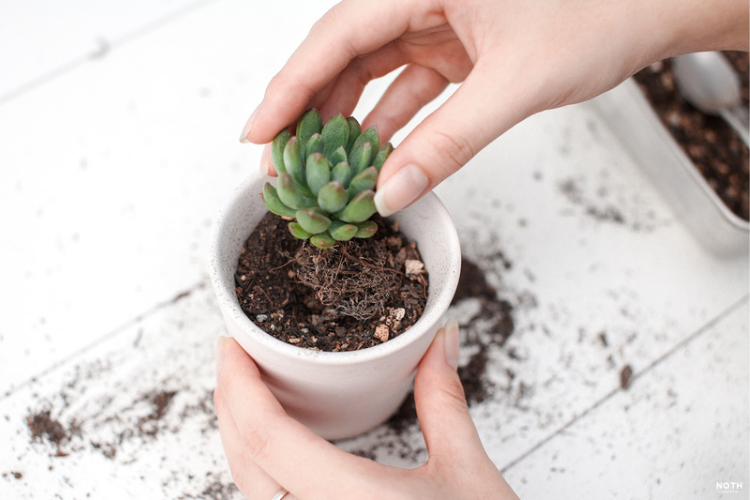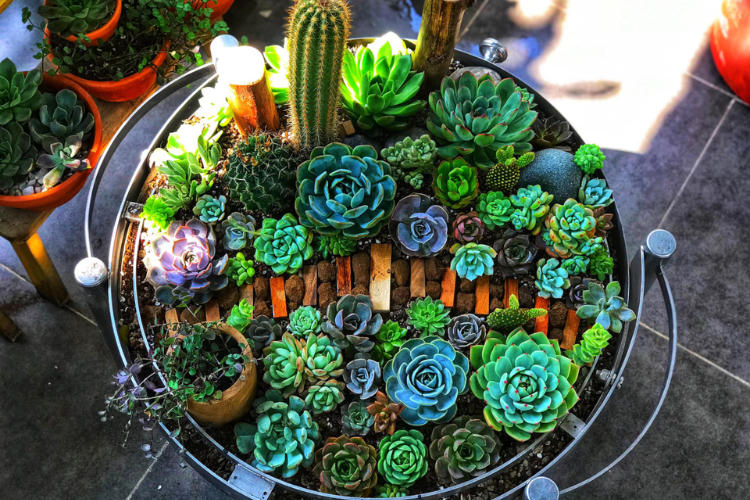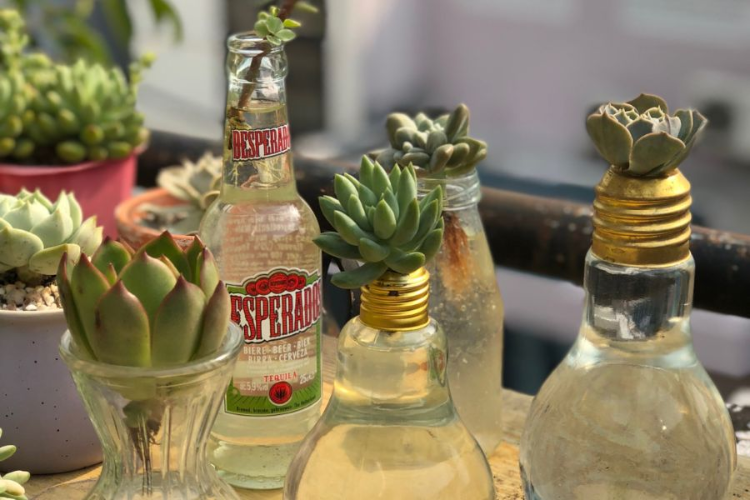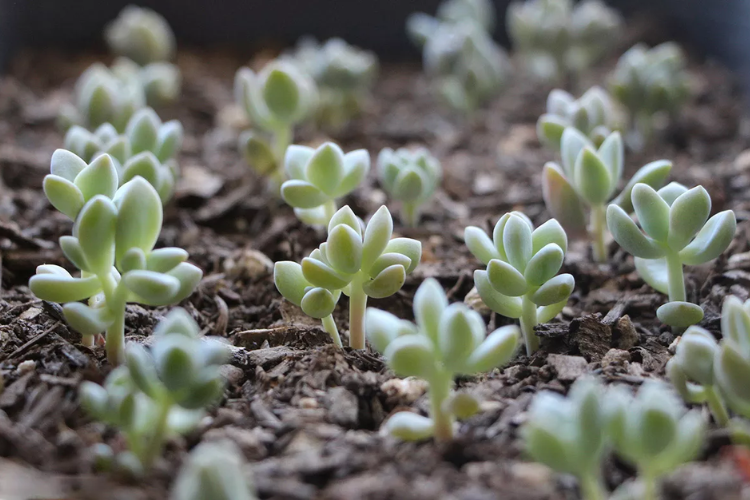Echeveria, or more commonly known as stonerose, is a beautiful and low-maintenance plant that can be easily grown and cared for. With the following basic planting techniques, you can become a skilled gardener in no time.
1. How to Plant Stonerose When You First Buy It
The initial phase after purchasing stonerose is crucial as proper care during this period will promote vigorous growth. Here’s how to plant stonerose when you first get it home:
For the first 1-2 weeks, place the plant in an area with ample light but avoid direct sunlight and high temperatures.
During this time, as the roots are not yet fully recovered, refrain from watering or only water very lightly around the edges of the pot. This helps prevent root rot and allows the plant to adapt to the climatic conditions in your area.
As for the soil, you can use pre-prepared soil or mix it with crushed gravel at a 50-50 ratio to ensure good drainage.

2. How to Plant Stonerose in a Pot
To enhance the aesthetic appeal, many people like to combine different varieties of stonerose in the same pot. The planting method is essentially the same as planting individual plants. The most important thing is to choose a pot with drainage holes at the bottom to prevent waterlogging, which can be detrimental to the roots. The pot size should also be appropriate for the number and size of the plants.
To plant, fill the pot about two-thirds full with the prepared soil, then place the stonerose plants into the soil. Use one hand to hold the plant and the other to add more soil until the plant is securely anchored. Afterward, you can lightly spray water to moisten the soil.

3. How to Plant Stonerose in an Aquatic Environment
Stonerose, which typically requires minimal water, has specific requirements when grown in an aquatic style. First, prepare the plant by trimming the roots and cleaning the base. Then, place the plant in a cool environment to encourage root growth. When choosing a pot, opt for a transparent one so you can easily observe the root development.
To plant, fill the pot with clean water. Then, use a piece of plastic or foam cut to fit the mouth of the pot, with a hole cut out for the stem of the stonerose to keep it upright and prevent it from being submerged. Ensure that the roots are slightly touching the water.
In this aquatic planting method, fertilizing is not necessary. However, regularly change the water to maintain a healthy environment for the plant.

4. How to Plant Stonerose Using Leaves from the Mother Plant
Due to its robust growth potential, stonerose can be easily propagated using leaves from a healthy mother plant. Choose disease-free, robust plants as your source. Then, carefully remove older leaves from the mother plant, keeping them as intact as possible, with the leaf axils still attached to encourage sprouting.

Prepare a suitable soil mix for propagating stonerose and place the detached leaves into the potting mix. During this time, refrain from frequent watering, and if the soil becomes too dry, you can mist the surface to add moisture.
After about two weeks, the seedlings will start to develop. Continue to monitor and keep the plants in a cool, bright location. After about two months, when the plants are sturdy enough, you can move them outdoors if desired.

5. Conclusion
There you have it—simple methods to plant and care for stonerose. We hope you found this guide helpful and wish you success in creating a vibrant, thriving garden.
Additionally, you can explore a range of genuine home appliances at great prices from FPT Shop by following this link: Home Appliances.
You may also find the following articles useful:
- iPhone Sudden Shutdown with Remaining Battery: Causes and Fixes
- Overheating Phone: Causes and Solutions to Protect Your Device
The Magic of Rotten Tomatoes: Unveiling the Surprising Benefits of a Foul Fruit
Introducing the Power of Tomato Magic: Unveiling the Surprising Benefits of Rubbing Spoiled Tomatoes on Your Fridge
Sometimes, even the most unexpected ingredients can unlock a world of surprising benefits. Prepare to be intrigued as we explore the hidden powers of a simple tomato and how it can transform your fridge into a haven of freshness and longevity. It’s time to uncover the secrets and superpowers of this humble fruit!



































